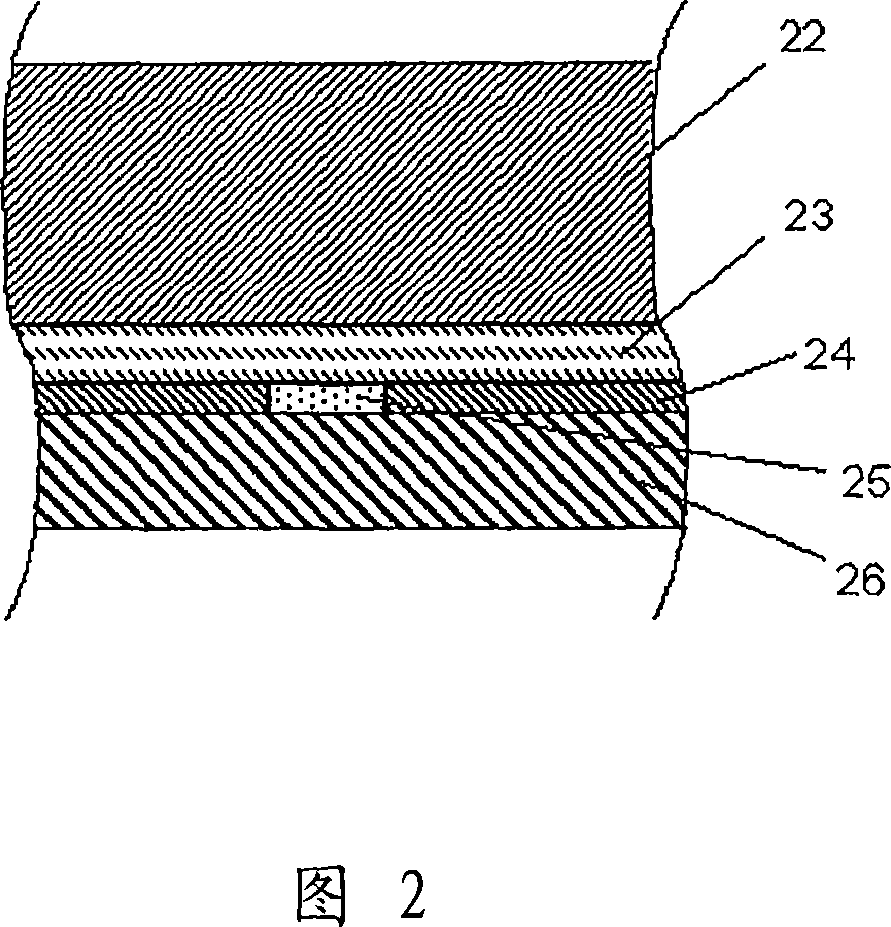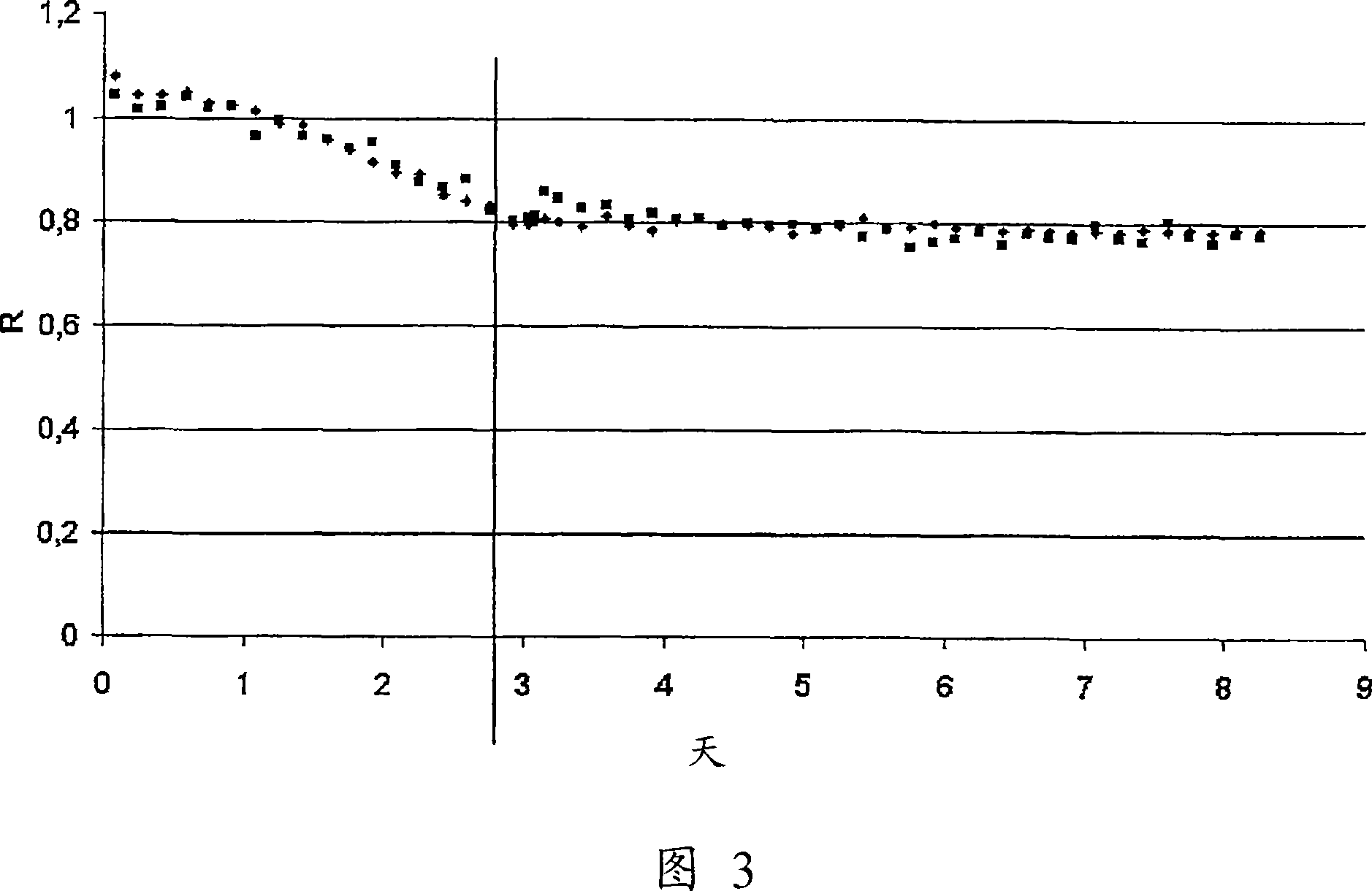Enzyme sensor including a water-containing spacer layer
A divalent manganese ion, sensor technology, applied in biochemical equipment and methods, instruments, scientific instruments, etc., can solve the problems of unstable zero-point current of electrochemical sensors, interference of magnesium sensors, etc.
- Summary
- Abstract
- Description
- Claims
- Application Information
AI Technical Summary
Problems solved by technology
Method used
Image
Examples
Embodiment 1
[0100] Example 1: Effect of manganese ions on creatinine sensor measurement.
[0101] Modified from Radiometer Medical ApS, ABL of Denmark TM 735 blood analyzer, thus adapting to the above-mentioned dual sensor system. ("Exemplary sensor construction (conventional sensor)").
[0102] Various concentrations of manganese ions were added to radiometer cleaning solution S4970 samples. Manganese was added in the form of manganese(II) acetate to obtain concentrations of approximately 2 μM and 10 μM, respectively.
[0103] The stability of the creatinine sensor was checked by observing the sensor's response to a calibration solution containing each creatinine and creatine substrate.
[0104] Calibration solutions were prepared by dissolving approximately 200 μM creatinine in Radiometer Calibration Solution 1 S1720 and approximately 200 μM creatine in Radiometer Calibration Solution 2 S1730. These solutions are repeatedly introduced into the instrument and a sensor response is obt...
Embodiment 2
[0112] Example 2: Operation of the creatinine sensor.
[0113] Modified from Radiometer Medical ApS, ABL of Denmark TM 837 blood analyzer, thus adapting to the above-mentioned dual sensor system. The cleaning solution contained divalent manganese ions at a concentration of 10 μM. The sensor cleaning solution is also used to store the sensor between measurements and calibrations.
[0114] Standard operating procedures for the instrument included single-point calibrations (one calibration solution) every 4 hours and dual-point calibrations (two calibration solutions) every 8 hours. Typically, about 40 measurements are performed per day (24 hours).
[0115] When performing calibration or sample measurements, the cleaning solution is removed from the sensor and the calibration fluid or sample, respectively, is pumped into the sensor. Allow the sample / liquid to persist for 30 seconds. Afterwards, the calibrator or sample is removed by flushing with a cleaning solution, which c...
PUM
 Login to View More
Login to View More Abstract
Description
Claims
Application Information
 Login to View More
Login to View More - R&D
- Intellectual Property
- Life Sciences
- Materials
- Tech Scout
- Unparalleled Data Quality
- Higher Quality Content
- 60% Fewer Hallucinations
Browse by: Latest US Patents, China's latest patents, Technical Efficacy Thesaurus, Application Domain, Technology Topic, Popular Technical Reports.
© 2025 PatSnap. All rights reserved.Legal|Privacy policy|Modern Slavery Act Transparency Statement|Sitemap|About US| Contact US: help@patsnap.com



